Well, perhaps not a completely “new” approach to skiing. More like so old that it seems a new approach to skiing. This draws upon the forgotten forms and technology that was once common amongst our Northern ancestors. After learning more about them myself, I saw no reason why they shouldn’t be brought back into the 21st century. Sporty spandex with outdoorsy logos are not necessary here! In fact, it would be best if you just didn’t…
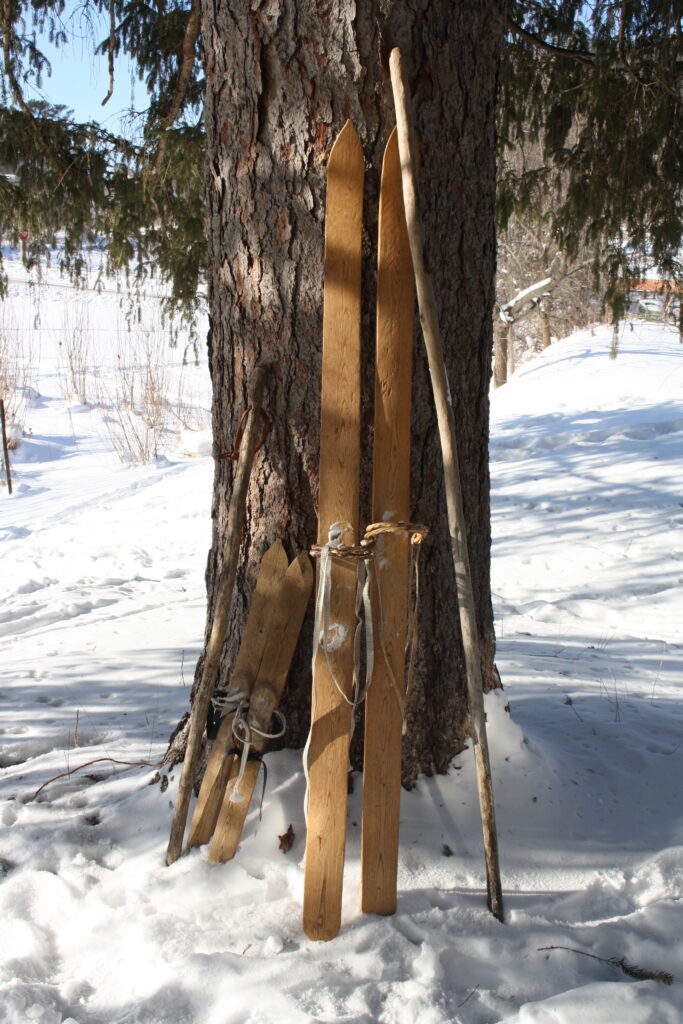
Skiing has long been an important part of my identity. Much of my childhood was spent growing up in South America, and I sorely missed having snow. But when I moved back North, I fully embraced the season. I had grown up hearing about my great-grandfather who was from a tiny island in the Gulf of Bothnia in northern Sweden. He would ski to school as a boy and even as an old man in his late 80s in Minnesota would still ski a mile a day. As a youth, I decided that this pastime was a tradition that I ought to embrace, as it veritably flowed in my veins.
One of my undergraduate capstone projects was a research project on the ancient origins and designs of skis. I used it as an excuse to build and experiment some of the concepts on my own. A fantastic book on the subject is: Skis and Skiing from the Stone Age to the Birth of the Sport. I highly recommend this read. What it did was transform my whole outlook to this new approach to skiing.
How Long Have We Been Going on Skis?
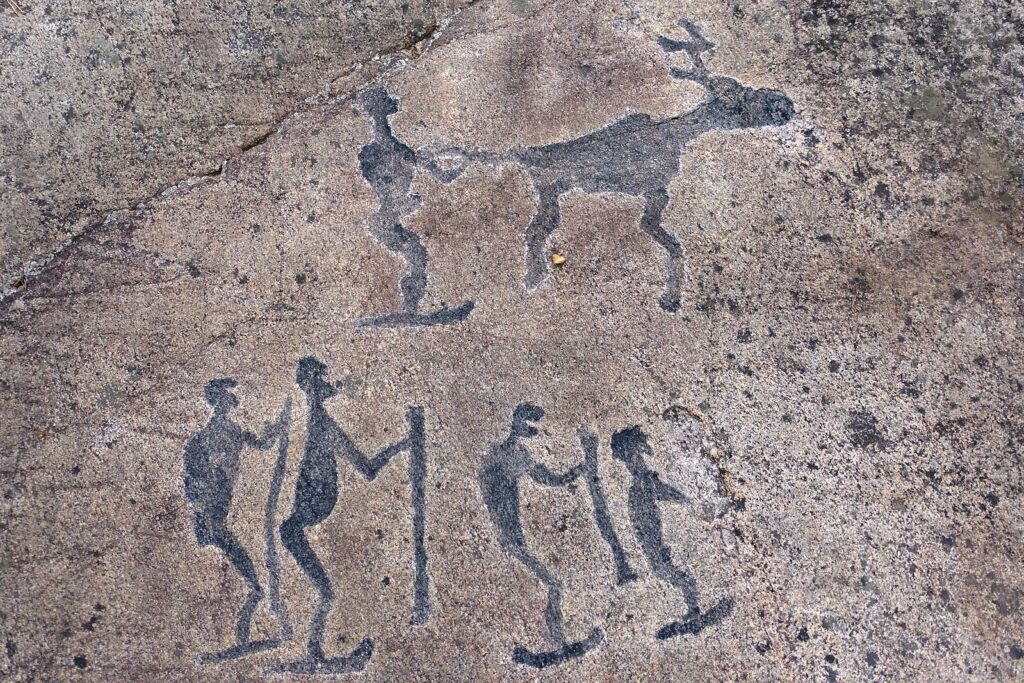
Oldest found evidence of skis is as old as the late Stone Age in the Scandinavian/Baltic regions. Rock carvings have been found of hunters pursuing game on skis. Actual wooden skis dating several thousand years before Christ have also been discovered in peat bogs. What was their purpose?
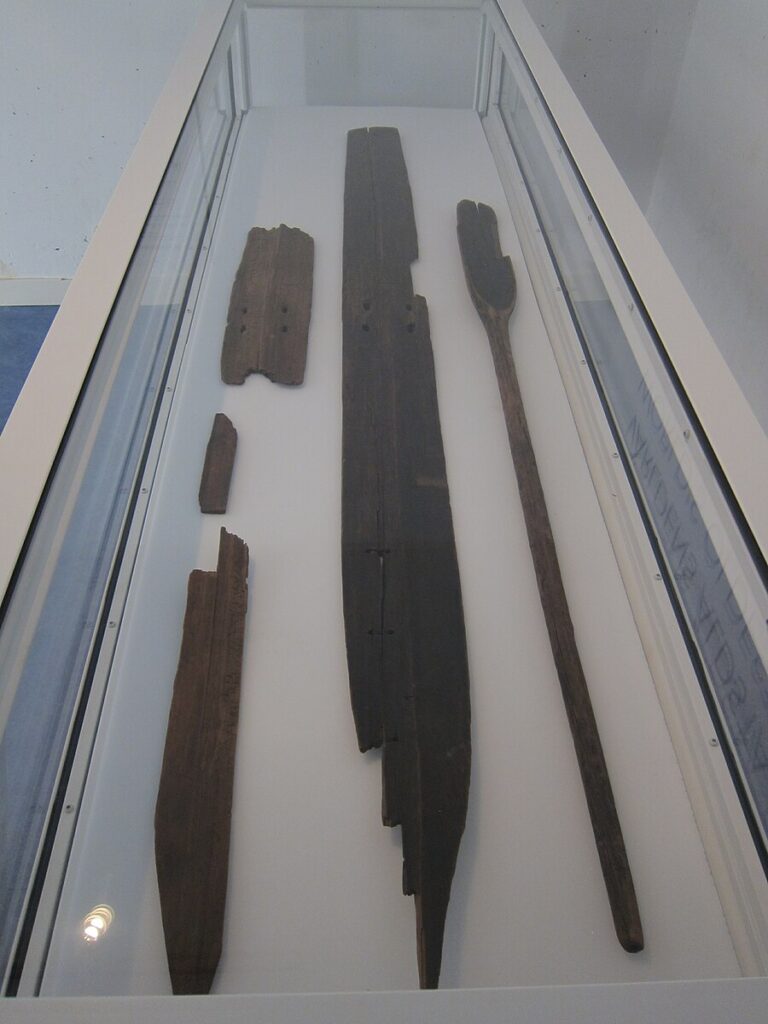
What Skiing was Like–before it was a Sport

Whether cross-country or alpine downhill skiing, we nowadays associate skis with recreation and sport. But the sport has a heritage stretching back to when skis were very much a practical, and downright essential tool.
In the more southerly areas of Europe, the coming of Winter was a time when life stopped. With the harvest in, farmer folk fed their hearth fires and waited for the coming of the next growing season. However, in the Scandinavian regions, it was a bit different. The deep Snow and ice actually brought possibilities.
Travel
Skis were a vital means of transportation for millennia in places where paths were primitive and roads were almost non-existent until the beginning of the modern era. In fact, instead of hampering it, Winter was a good time to travel in heavily forested places like Scandinavia. The boreal marshes were frozen over, and the deep snow blanketed all the forest undergrowth. With skis, one could float on top of the snow and veritably fly through the wild tracks that would be impassable in the Summer months.
In fact, armies could have more mobility through natural obstacles whilst on campaign in Winter.
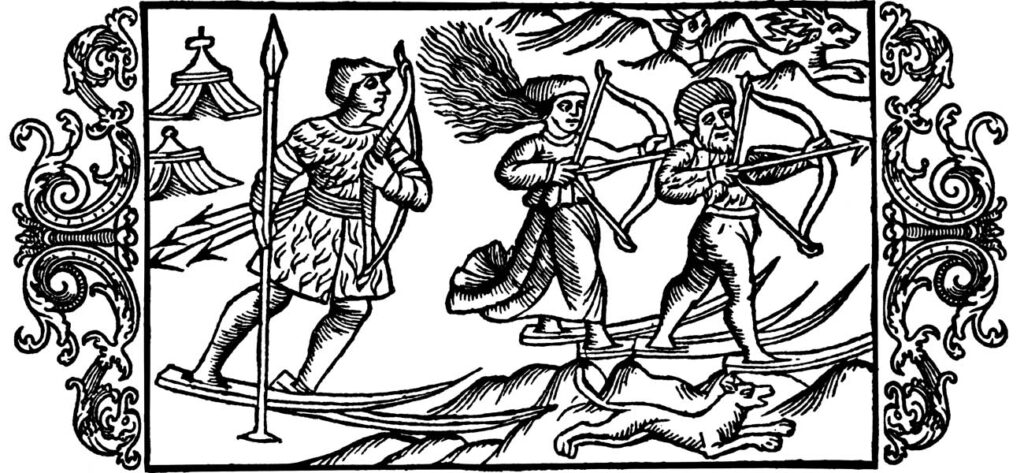
Hunting
The harvest of wild animals (by either hunting or trapping) has always been a vital part of folk culture in Scandinavia since the Stone Age. In northerly lands where soil fertility was more limited, meat was a vital supplement to diet. On skis, a hunter with a spear could actually run down deer and European elk in deep snow.
The trapping of fur bearing animals like wolverine, marten, arctic fox and lynx was a valuable source of trade revenue that was highly sought after by the rest of Europe. A trapper accessed the wild back-country on skis to bag his quarry in the depths of Winter when the fur coats of these animals were the thickest.
For millennia, hunting and skiing were close to synonymous. You see this in Old Norse mythology, where Ullr was the god of both skiing and hunting.
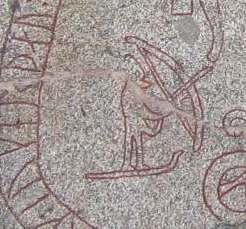
Resurrecting an Old Concept for the 21st Century
There are certain unique aspects to the ancient form of skiing have been virtually forgotten. The rediscovery of these has paved the way for this whole “new approach to skiing” that I keeping talking about. It seems completely new, because we need to relearn them. But having tried them out for myself out of sheer curiosity, I attest that they work great. Here is what I have found:
The Single Pole
For most of history (and prehistory) one did not use two light poles for skiing. Rather, skiers used a stouter, longer stave, or pole. Oftentimes, this stave itself was a spear–used for either hunting or fighting. The Sami (Lapps) reindeer herders continued to use the single pole till about the turn of the 20th century. Sometimes, the tip of their pole was a small snow shovel carved from antler or else a spear head for hunting wolves. However, interestingly, the reindeer herders of the Altai Mountains in Central Asia to this day still use traditional skis with the single pole.
The long pole provides great stability, acting as a sort of “third leg” when going downhill.
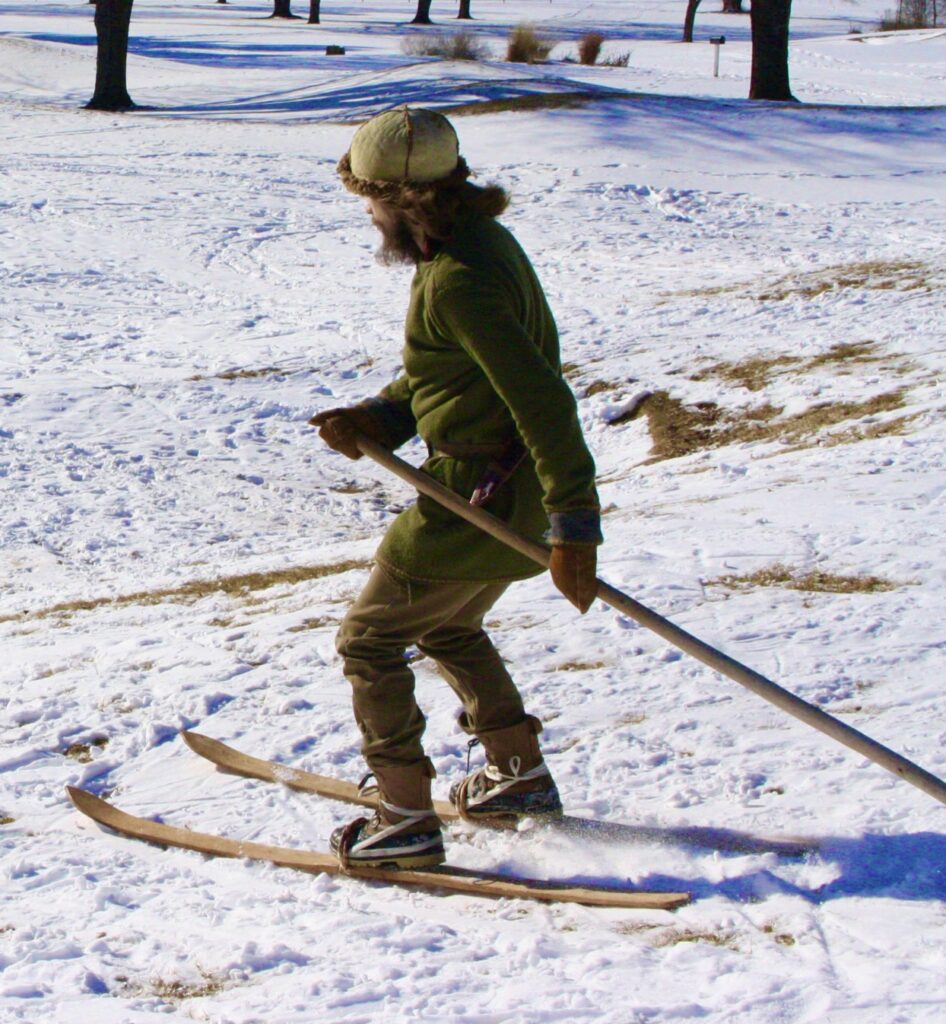
Bonus Feature: Fur Bottoms
Another ancient aspect to many skis was attaching furs to the bottoms. With the hairs running back, this allowed the skier good glide going forward, but to have traction in going up hill. In other words, it made a superb vehicle for the rough backcountry. A few years back, I tried this out for my research project and really loved the results. I had absolutely no trouble climbing up steep slopes or even clambering over brush piles.
Backcountry Skiing
Also known as touring skis. Though not nearly as popular as the more mainstream cross-country with and downhill skiing, you can purchase modern touring skis. They are for the adventurer who shuns ski-lifts and neatly groomed trails that go nowhere except in circles. They usually have scales to give extra grip for skiing uphill. They are the nearest modern equivalents to ancient skis. There are different brands out there. In my opinion, the best skis are the kind that you don’t need specialty shoes for. Rather you strap them on with your normal everyday winter boots. This is a big plus for Winter camping enthusiasts. I would look to buy something like this.
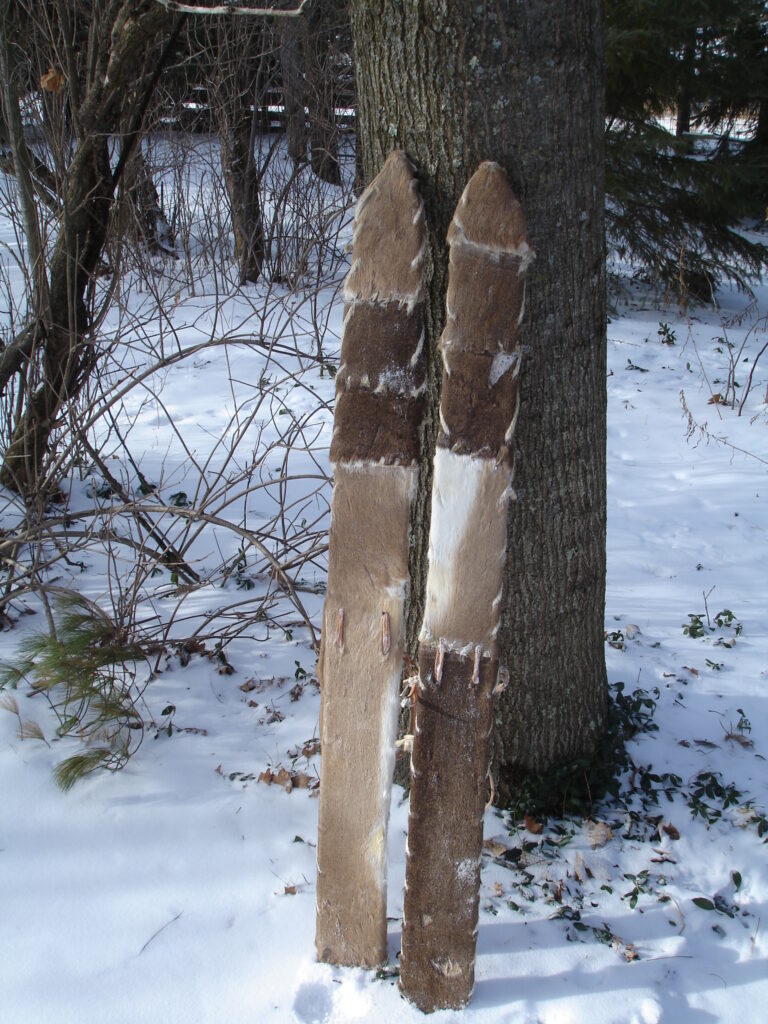
I used a whitetail deer hide for my experiment. Traditionally in Scandinavia, sealskin, with its fine fur, was the prime material. Though this practice had died out there, it has been preserved in Central Asia, such as the Khanty reindeer herders of Siberia, and the folk of the Altai Mountains, who use horse hide on their skis.
Again, if you wanted to try this concept out (without going to the lengths that I went through), there are modern synthetic options out there. Check these out.
This is just touching on a huge subject. I have been researching ancient skis for years now and developing my own “new approach to skiing” by building my own wooden skis. Read my article on how I build a pair of medieval-style skis here.
~ Nathanael
Need the perfect drink to warm up after an exhilarating ski through the woods? We have several options on our blog. Try this one
Here is also my wife’s Hot Cocoa
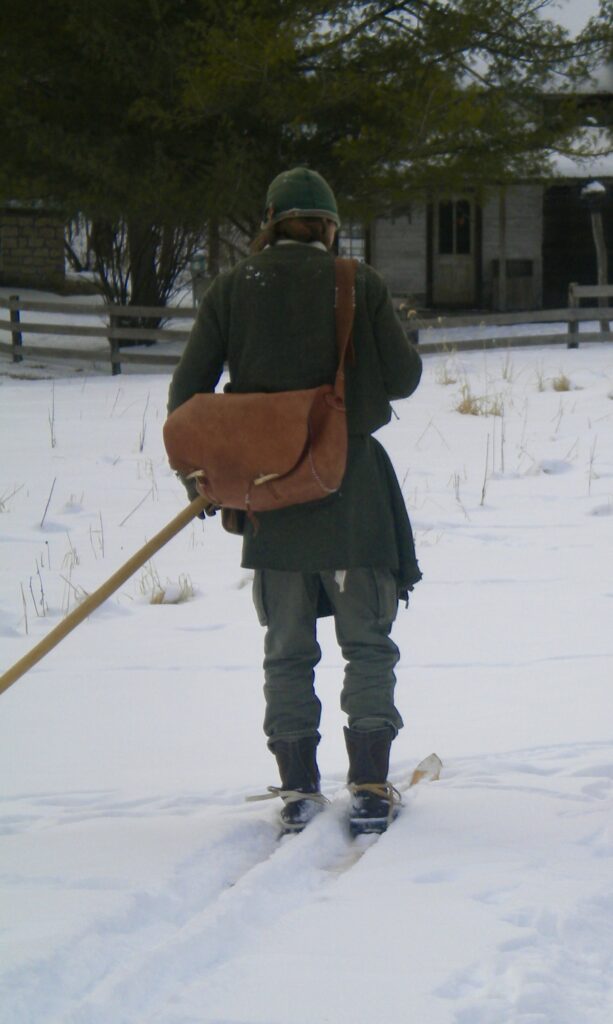


Leave a Reply